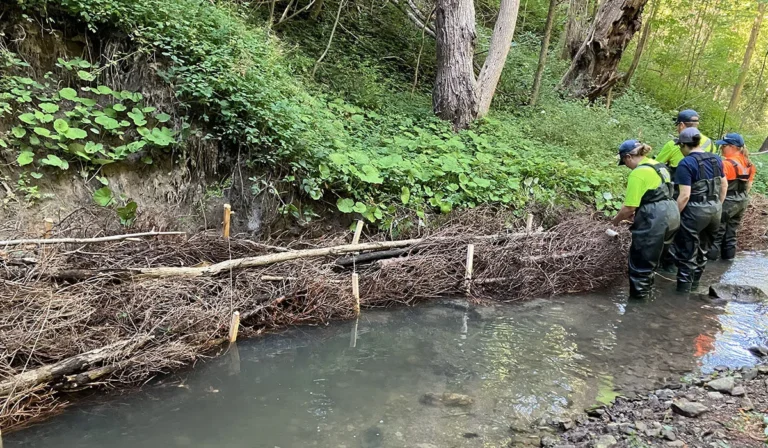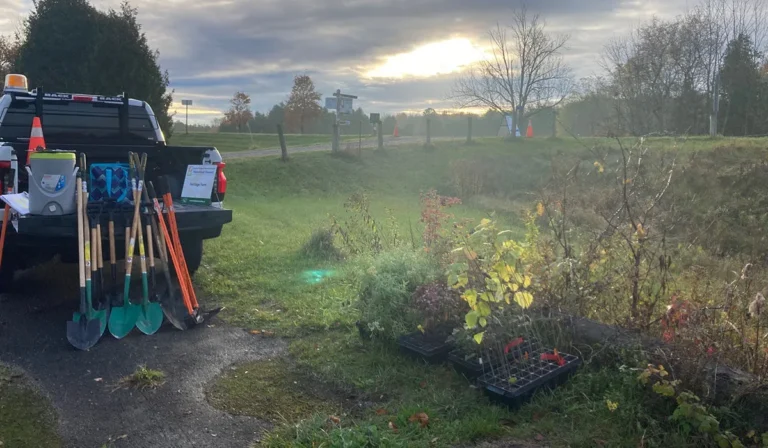Coyotes (Canis latrans) are one of eight members of the Family Canidae found in Canada. Often mistaken for wolves, coyotes are smaller, have shorter legs in relation to their body size, and possess narrower, pointed snouts. They are a common sight across both rural and urban areas and are often found living close to humans.
Coyote activity
Unlike many mammals that go into hibernation, coyotes remain active throughout fall and into the winter. They are typically most active around sunrise and sunset, but in the winter, they become more active throughout the day. This seasonal change in behaviour can create the potential for more human-coyote interactions.
Have you ever had a coyote seem to follow you on a walk? It’s not hunting. It’s escorting. Coyotes in Ontario may trail or walk nearby if you’re close to their den or family. They’re making sure you leave their territory. Think of it as their way of saying, “You’re leaving now, right?” It’s protective behaviour, not predation. If this happens, stay calm, don’t run, and keep walking steadily away. Always keep pets leashed. Dogs, especially, can trigger a defensive response.
Staying safe
We can keep ourselves, children, pets, and coyotes safe by following some simple guidelines:
- Don’t feed wildlife – this includes hand feeding and creating food piles. Many problems occur from this activity including:
- Attracting unwanted animals around homes and areas occupied by people.
- Animals lose their natural fear of humans and will become more aggressive as they learn to associate people with food.
- Feeding interrupts natural foraging behaviors.
- Human foods are not suitable for wildlife; they lack proper nutrients and can cause health issues, injury or death.
- Animals may gather in unnaturally large groups which makes it easier for diseases and parasites to spread.
- Avoid hiking in areas known to be inhabited by coyotes around peak activity times (e.g. sunrise, sunset).
- Supervise children at all times.
- Stay on marked trails.
- When walking dogs, keep them on a leash and supervised at all times.
- Dogs and coyotes are close cousins; the scent of your dog may cause coyotes to become territorial.
- Regardless of size or breed, all dogs can be at risk of becoming predated or injured by coyotes.
Feeding wildlife is prohibited in HCA conservation areas and within the City of Hamilton. It is a fineable offense under City of Hamilton by-law No. 12-130. Feeding wildlife can result in a $10,000 fine on the first offense.
Dogs must be leashed. Dog owners are required by the City of Hamilton By-law and regulations under the Conservation Authorities Act of Ontario to keep their dogs leashed at all times when visiting HCA conservation areas or public spaces.
If you see a coyote…
If you happen to cross paths with a coyote on your hike, remain calm and give it space. Coyotes typically prefer to avoid people, and chances are when it sees you, it will quickly head in the opposite direction. Coyotes are naturally curious creatures and may pause to look you over, but will have no intention to approach or attack. If you do feel threatened by a coyote, make loud noises and sudden movements to scare it away.
In most cases, coyotes and human can coexist with little issue as long as they are provided physical space, access to habitat, and natural food sources, and maintain a healthy apprehension to humans.





